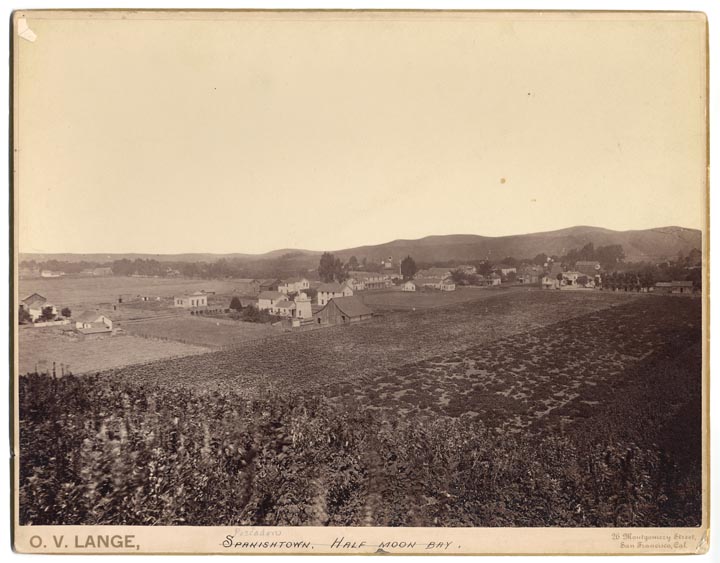Spanishtown
The community began to develop in the 1840s as San Mateo County's first real town. Originally San Benito, the town was renamed Spanishtown and attracted a thriving fishing industry in addition to its continued importance to coastal agriculture. Spanishtown became a racially diverse community, settled by Canadians, Chinese, English, Germans, Irish, Mexicans, Italians, Scots, Portuguese, and Pacific Islanders. Regular stagecoach service was established with San Mateo; coaches also served Purissima, Lobitos, and San Gregorio. Levy Brothers opened a department store downtown. Spanishtown was officially renamed Half Moon Bay in 1874.
https://en.wikipedia.org/wiki/Half_Moon_Bay,_California#History
Spanishtown, or Half Moon Bay as it is now called, is perhaps the oldest settlement in San Mateo County, dating back to the 1840s. For thousands of years, the land was inhabited by Ohlone Indians. They lived in many places around San Mateo County, including Half Moon Bay’s Pilarcitos Creek.
